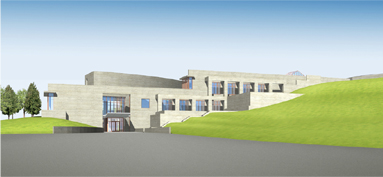Level 3 to provide connectivity for Library of Congress' multimedia digital network

The Library of Congress is the official repository of the knowledge and civic affairs of the United States.
When you are dealing with all of this information form LOC out to the rest of the U.S., even non-digitized- there's a true implication that data traffic will be massive, and non-stop. After all, itsshelves and holdings constitute more than 134 million items.
That's why its important to note that Level 3 Communications’ Wholesale Markets Group today announced it has delivered fiber optic links to the Library of Congress. We're talking about the underlying infrastructure for the Library's National Audio Visual Conservation Center (NAVCC). That's a rendering of the NAVCC at the top of this post.
With the NAVCC, we are talking about the national digital archive.
The NAVCC supports the preservation and digitization of the national copyright collection of films, television, radio, and recorded sound.
Level 3's role is the installation and connectivity maintenance that extends the Library’s Dense Wavelength Division Multiplexing (DWDM) network.
And a very busy network, I might add.
When the NAVCC opens in just a matter of week, it will house over one million theatrical films, newsreels and television programs, in addition to educational, industrial and advertising material, including over 150,000 reels of nitrate film. The Center will also house a centralization of the Library's collections of nearly three million commercial sound recordings and radio broadcasts. That will include early voice recordings of notable Americans, present and especially past.
The Library's mission is to make its resources available and useful to the Congress and the American people, and to sustain and preserve a universal collection of knowledge and creativity for future generations.
